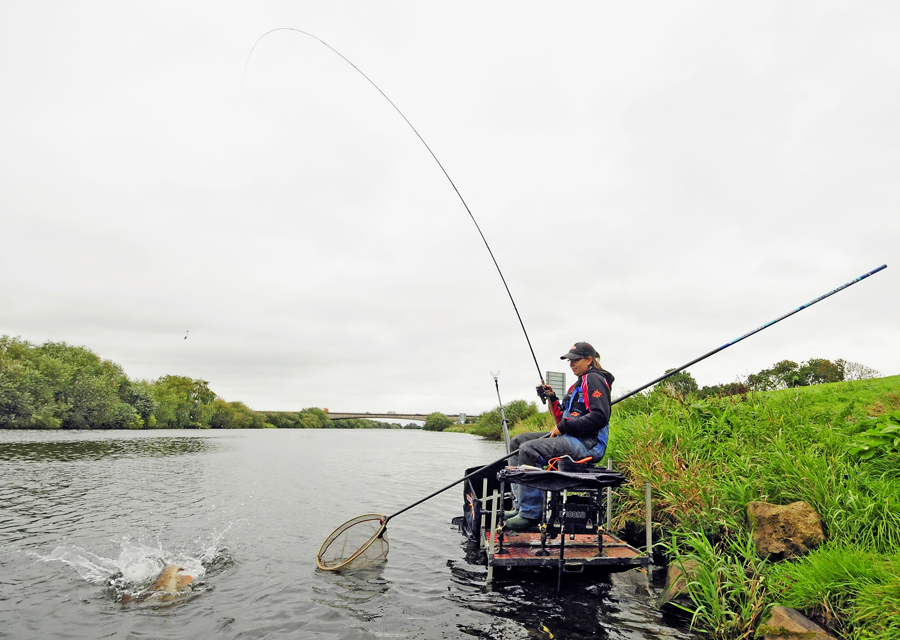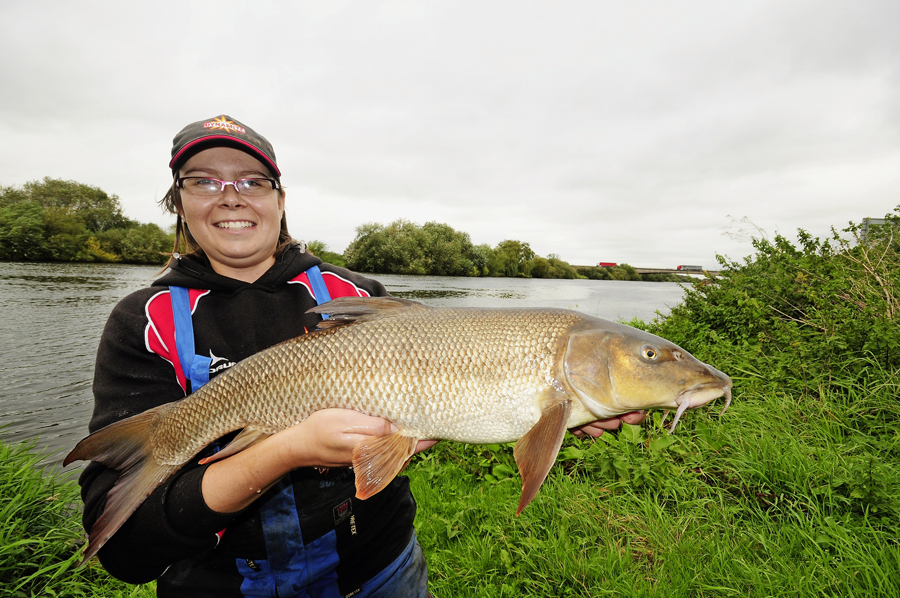3 července, 2017 | Soutěžní & Běžný Rybolov | Články | Novinky
0 PoznámkyIf you want to catch a few Trent barbel you almost need to target the bream.
 And no, I haven’t taken leave of my senses! But, it is a fact that over the past ten-years, the non-tidal Trent has gone through a transformation. A decade ago, if you were looking for a handful of barbel on a day-only session, a 10mm to 14mm pellet or boilie fished in conjunction with a large heavy (3oz-plus) feeder was about as subtle as the tactics got, before awaiting the old ‘five-foot twitch’ as the hooked fish roared off downstream.
And no, I haven’t taken leave of my senses! But, it is a fact that over the past ten-years, the non-tidal Trent has gone through a transformation. A decade ago, if you were looking for a handful of barbel on a day-only session, a 10mm to 14mm pellet or boilie fished in conjunction with a large heavy (3oz-plus) feeder was about as subtle as the tactics got, before awaiting the old ‘five-foot twitch’ as the hooked fish roared off downstream.
Forward to now and things are very different.
On a lot of stretches of the Trent, especially around here at Winthorpe, near Newark, the fish see a lot of pressure and so they have wised up, learning by association. If you adopt these ‚old-school‘ methods of twin rods, set-up beach caster style, big feeders and even bigger hookbaits and generally you’ll be waiting a long time until it gets dark, when you might get a bite or two.
To catch consistently through the day when the river is low and clear, you need to completely reappraise your barbel fishing methodology, fishing for them almost like you would target bream on a commercial I have found.
Modern times need modern ways
Although long-stay barbel fishing with carp rods – Carbelling, as it is popularly known – is still very popular and at times effective on the Trent, too many day-ticket anglers turn to this as their ‘one and only’ approach.
With the fish being highly pressured on many of the Trent’s middle reaches, it pays to adopt a more softly, softly catchy monkey approach.
By fining down the hookbait – using punched meat, snails, maggots or casters – rather than the more standardised boilies and big pellets you will definitely catch more and often a larger stamp.
As well as using smaller offering, you also need to regularly swap them, just like you would when bream fishing. Just because the river looks big – around 70 to 80-yards wide at this point – don’t be tempted to fall into the big baits only trap.
Two for one
Developed through the match fishing scene, by using both a light bomb rig in conjunction with a separate float set-up, my experience has revealed that these two styles combine to make the perfect barbel-fishing tactic.
Although you can bring in a third element – the feeder – if needed, I tend to start off my session using the bomb rod.
This will be fished for the first hour, before I swap over to a (big stick) float rig, running the hookbait down the baited run, rather than legering, as I am with the bomb.
It isn’t the fact that you use both bomb and float tactics, more how you combine the two with the loosefeed that leads to success.
When I first get to the swim, I like to feed 10 large mouthfuls of hemp and casters, mixed to a 4:1 ratio. This loosefeed is fed at the 12 o’clock position to where I’m sitting. I will then spend the next few minutes tackling up, to allow this loosefeed to ‘do its job’.
As hemp tends to fall through the water column at a rate of around one-foot per one-yard travelled, in today’s 10-foot deep swim, I’ll be looking to cast the bomb rig about 10 to 12-yards downstream, where the majority of loosefeed should have settled. Although, the casters are lighter, so they will drift a little farther down. This is where my float set-up will come into play later on.
My bomb rod arrangement
 Considering the width of the Trent here, my bomb set-up is surprisingly light, comparatively to how others on the bank are fishing – 3oz-plus feeders normally.
Considering the width of the Trent here, my bomb set-up is surprisingly light, comparatively to how others on the bank are fishing – 3oz-plus feeders normally.
I use a 1/4oz bomb, set-up free-running, on a 10lb mainline to a hooklink of between four and eight-feet of 0.20mm Fluorocarbon.
With the rod pointing skywards and downstream, I let off around 10 to 15-feet of line to form a bow in the mainline. This serves two purposes.
The first is that the bow reduces the water pressure on the end tackle, enabling the use of a small bomb so the presentation is subtler.
The second, is that when I pull on the mainline, between the reel and butt ring, the small lead will dislodge and roll gently downstream, to a point where it will once again to come to a natural resting point. This makes the hookbait look more like a natural offering rolling downstream.
Switching to the float
The bomb will cover the water as it rolls downstream, but to cover the swim more comprehensively, the float is better.
 Using a large 2.5g stick float, this is rigged with a 2g olivette with one No8 and two No11s below to again give a natural fall of the hookbait.
Using a large 2.5g stick float, this is rigged with a 2g olivette with one No8 and two No11s below to again give a natural fall of the hookbait.
As the loosefeed casters will find their way further downstream than the hemp, the float allows you to explore this, running the float well past the loosefeed, to target any possible bigger, wary fish, that could be sitting off the bait.
I tend to set the float to fish around six-inches overdepth so that the caster hookbait drags along the deck, again mimicking the loosefeed. By rotating between these two tactics it gives me the best of both worlds and a totally different presentation to what the barbel here get used to and also have become very wary of.
So, how did I get on?
Well, exactly as I thought I would to be honest.
Within less than an hour of setting up I had my first barbel of the day, a lovely clean fish of around 6lb, caught using a bomb-fished 4mm snail hookbait.
Swapping over to a hair-rigged Meaty Bite, I was able to land another fine fish soon after.
With the bomb line slowing, no doubt due to the disturbance caused by these two quick bites, by moving over to my float rig, baited again with a small snail, I again enjoyed almost instant success in the shape of a stunning double-figure barbel, which tipped the scales at a very pleasing 10lb 12oz. A fish that was a real pleasure to catch on the float.
By the end of the session, I had landed seven barbel in total, four off the bomb and three using float tactics.
Not a bad result considering the ‘carbelling boys’ only a handful of yards downstream were yet to experience even a bleep on their alarms, let alone a fish.
Leanne Knott





















Bez komentáře, začněte konverzaci nebo napište dotaz